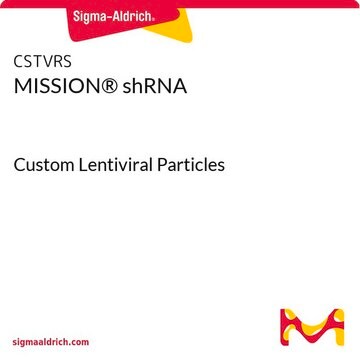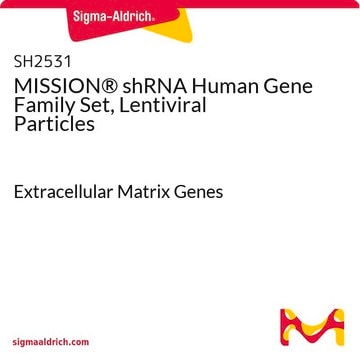SH3031
MISSION® shRNA Human Gene Family Set, Lentiviral Particles
Epigenetic Regulators
About This Item
Prodotti consigliati
Nome Commerciale
MISSION®
Temperatura di conservazione
−70°C
Informazioni sul gene
human ... CA1(759) , DNMT1(1786) , DNMT3A(1788) , DNMT3B(1789) , DNMT3L(29947) , MGMT(4255) , N6AMT1(29104) , N6AMT2(221143) , SPEM1(374768) , TRDMT1(1787)
Cerchi prodotti simili? Visita Guida al confronto tra prodotti
Categorie correlate
Descrizione generale
Altre note
Note legali
Codice della classe di stoccaggio
12 - Non Combustible Liquids
Classe di pericolosità dell'acqua (WGK)
WGK 3
Punto d’infiammabilità (°F)
Not applicable
Punto d’infiammabilità (°C)
Not applicable
Dispositivi di protezione individuale
Eyeshields, Gloves, multi-purpose combination respirator cartridge (US)
Certificati d'analisi (COA)
Cerca il Certificati d'analisi (COA) digitando il numero di lotto/batch corrispondente. I numeri di lotto o di batch sono stampati sull'etichetta dei prodotti dopo la parola ‘Lotto’ o ‘Batch’.
Possiedi già questo prodotto?
I documenti relativi ai prodotti acquistati recentemente sono disponibili nell’Archivio dei documenti.
Il team dei nostri ricercatori vanta grande esperienza in tutte le aree della ricerca quali Life Science, scienza dei materiali, sintesi chimica, cromatografia, discipline analitiche, ecc..
Contatta l'Assistenza Tecnica.







